After repaving Hunter Street between James and Bay, the City repainted the lanes exactly the same as they were before instead of making room to physically protect the bike lanes.
By Ryan McGreal
Published August 10, 2018
Recently, the City of Hamilton repaved Hunter Street West between James Street South and Bay Street South. I thought: what a wonderful opportunity to repaint the car lanes to be slightly narrower in order to add a buffer beside the two-way bike lanes, and hence room for physical protection.
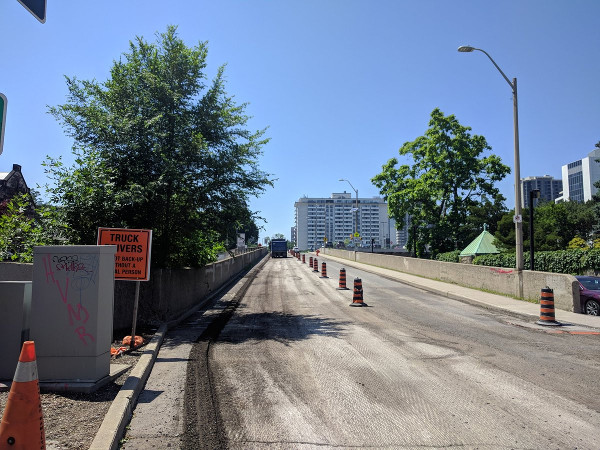
Hunter Street West being resurfaced, July 4, 2018
After all, the reason we're told the City could not physically protect the Bay Street bike lanes south of Hunter is that there is no space buffer between the bike lanes and the car lane.
Of course, this is Hamilton, where we never miss an opportunity to miss an opportunity. The street was resurfaced in the first and second week of July and repainted in the third week, and the lane markings were replaced exactly the same as before.
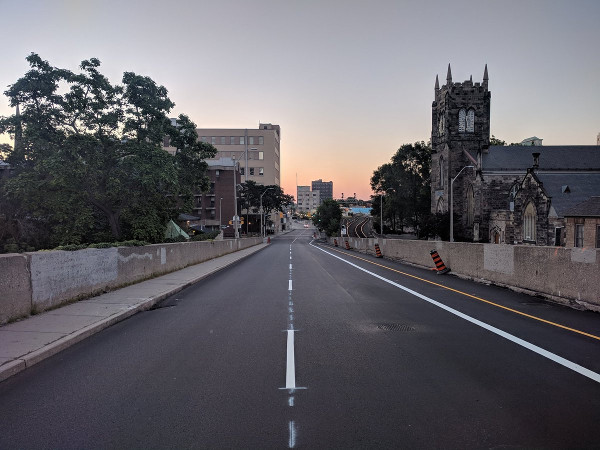
Hunter Street West repainted, July 20, 2018
By my unofficial measurement, the two automobile lanes are each about 3.4 metres wide, or a little over 11 feet. That is unnecessarily wide, and it encourages dangerous speeding - a serious problem along this stretch of Hunter Street.
Instead, the City could have taken, say, half a metre, or a little over a foot and a half, and used it as a buffer to accommodate a proper physical barrier between the automobile lanes and the bike lanes on the south side.
Alternately, the City could maintain a wider curb lane to accommodate the HSR buses that ride along this corridor and just narrow the passing lane. Either way, there's enough room to buffer the bike lanes.
Before the repaving, there were a dozen knockdown sticks separating the bike lane along a short stretch of Hunter just east of Park Street. (So much for the argument that you need a space buffer.)
Now, the same number of knockdown sticks have simply been distributed more widely along the bike lane between MacNab and Park.
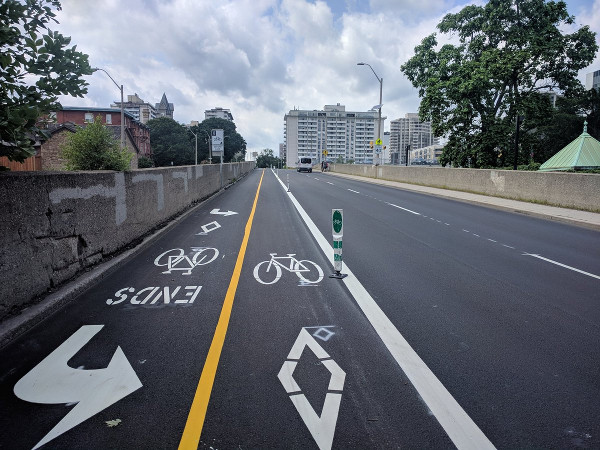
Knockdown sticks on Hunter between MacNab and Park
That's, um, welcome, I guess? But the gaps between sticks are so wide that a driver could slalom between them. I'm really not sure what the point is supposed to be.
In addition - well, they're knockdown sticks and don't actually provide any real physical protection. This week, I happened across a driver who was blocking the bike lane just west of Park and was attempting to pull a knockdown stick out from under her car.
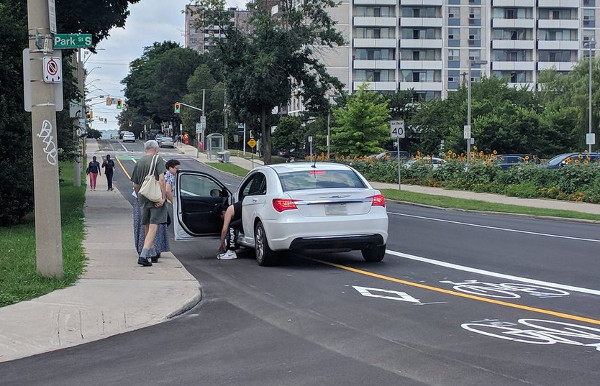
Driver blocking Hunter bike lane
For some unknown reason, the City has also installed a solitary knockdown stick right at the intersection of Hunter and Bay. All this does is demonstrate that the City could protect the entire lane but for some unfathomable reason has chosen not to.
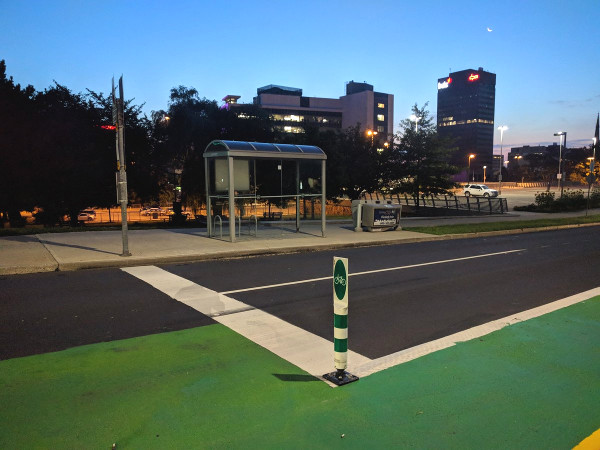
Single knockdown stick on Hunter at Bay
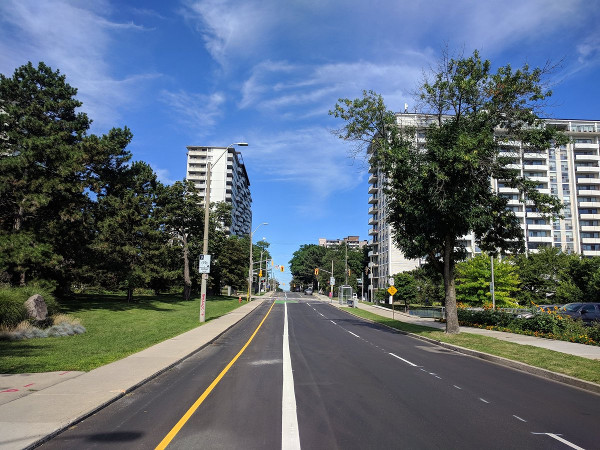
If you squint you can see the knockdown stick at Bay
What this street needs is proper physical protection: not just sticks but curbing and/or planter boxes to provide an actual barrier. Again, there is more than enough right-of-way on the street.
The City's own bike trip data clearly demonstrates that physically protected bike lanes attract a lot more riders than unprotected painted lanes.
And because I know someone will bring it up - yes, the City can still plow Hunter Street if they physically protect the bike lane. They had no problem plowing Hunter behind the cluster of knockdown sticks east of Park.
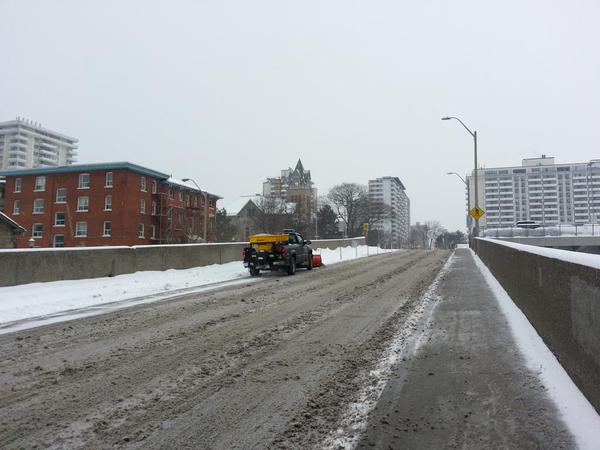
Truck plowing Hunter bike lanes (RTH file photo)
Another major benefit of physically protected bike lanes is that it becomes a lot more difficult for drivers to block them by parking illegally in them.
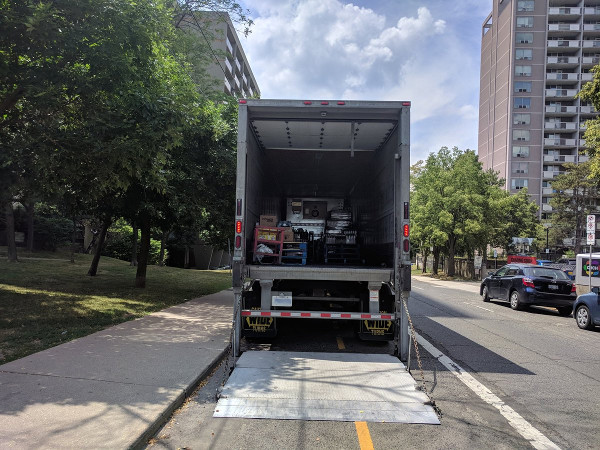
Delivery truck blocking Hunter bike lanes
I'm sure each person who decides to block a bike lane - illegally, I should add - reasons that it's only for a few minutes, so it's no big deal. But blocking bike lanes is like littering: each individual piece may be no big deal, but taken together they add up to a serious disruption.

It's just one plastic cup, what's the big deal?
In late June, while riding my bike south on Bay Street, I was literally run off the road by a truck driver who was driving north on Bay right on the bike lanes and completely blocking them. I had to jump out of his way onto the curb, and he turned left onto the bike lanes on Hunter Street, where he came to a stop and blocked the bike lane.
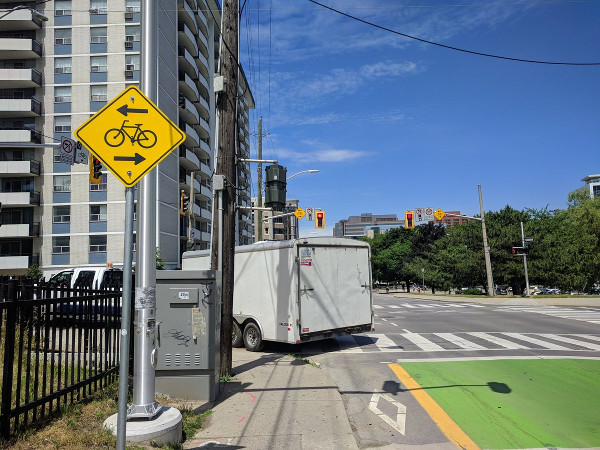
Truck driver turning from Bay bike lanes onto Hunter bike lanes
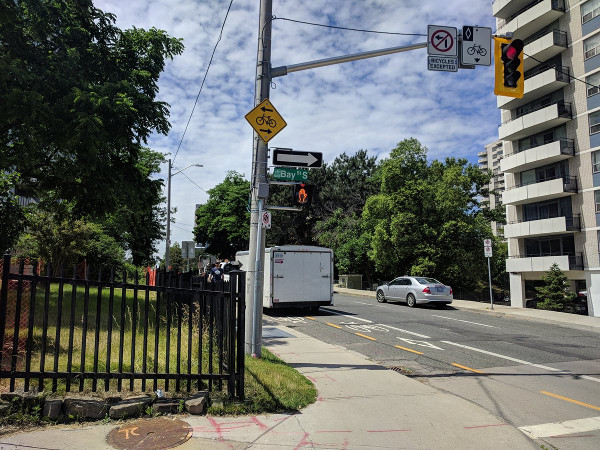
Truck driver blocking Hunter bike lanes
If the Bay Street bike lanes and the Hunter Street bike lanes were physically protected, it would have been much more difficult for him to do this. Where the Bay Street cycle track is physically protected - between Hunter and Cannon - it is very rarely blocked.
This stuff matters. For most people, if they don't feel safe riding a bike, they won't ride a bike.
Here's the thing: the politically difficult part of the project - carving out space on a public street to dedicate to cycling - is already done. Physically protecting that space is the easy part. In fact, drivers consistently prefer physically protected bike lanes, in part because it reduces the risk of cyclists veering into their lanes.
The worst part is that, after literally four years of asking the City why the Hunter Street bike lanes are not physically protected, I still can't get a straight answer. It's just total radio silence. There is simply no good reason not to do the right thing here!
By kevlahan (registered) | Posted August 15, 2018 at 11:18:58
Another reason to narrow the two motor vehicle lanes and provide a proper physical buffer: Central Public School is located on Hunter just East of Bay.
When our kids were going to Central I asked the principal why the kids are never allowed into the beautiful garden area fronting Hunter. The response: "the traffic is too fast and dangerous on Hunter".
Since the bike lanes are adjacent to the school, adding a buffer and physical protection would allow the Central School kids to go in front of the school, with supervision, since the traffic would be slower and well-separated from the school grounds. It would also be safer for kids walking to and from school (and to the YWCA).
As the photos show, there is not much traffic on Hunter most of the time which means the two wide lanes encourage speeding.
Countries that take cycling infrastructure (and human nature) seriously know that bike lanes require physical separation for safety and so motorists are not tempted to park in them "for just a minute". There are also lots of side benefits for pedestrians (and motorists due to the safer speeds).
Comment edited by kevlahan on 2018-08-15 11:20:48
You must be logged in to comment.
There are no upcoming events right now.
Why not post one?